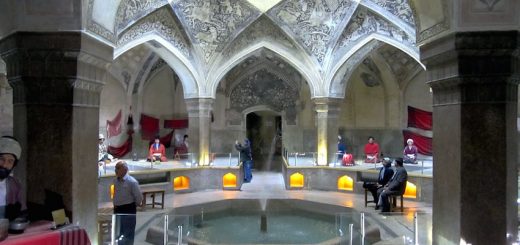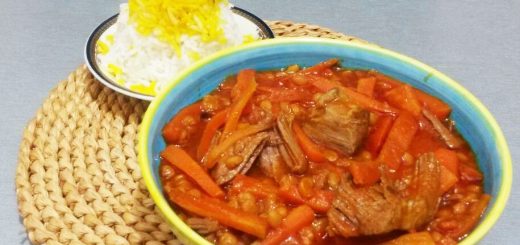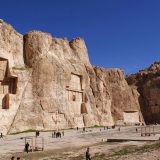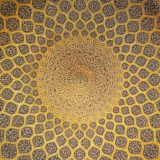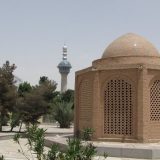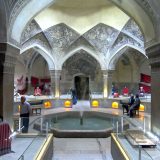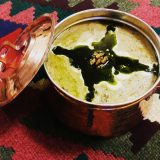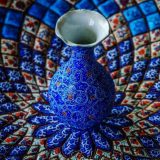Souvenir of Yazd
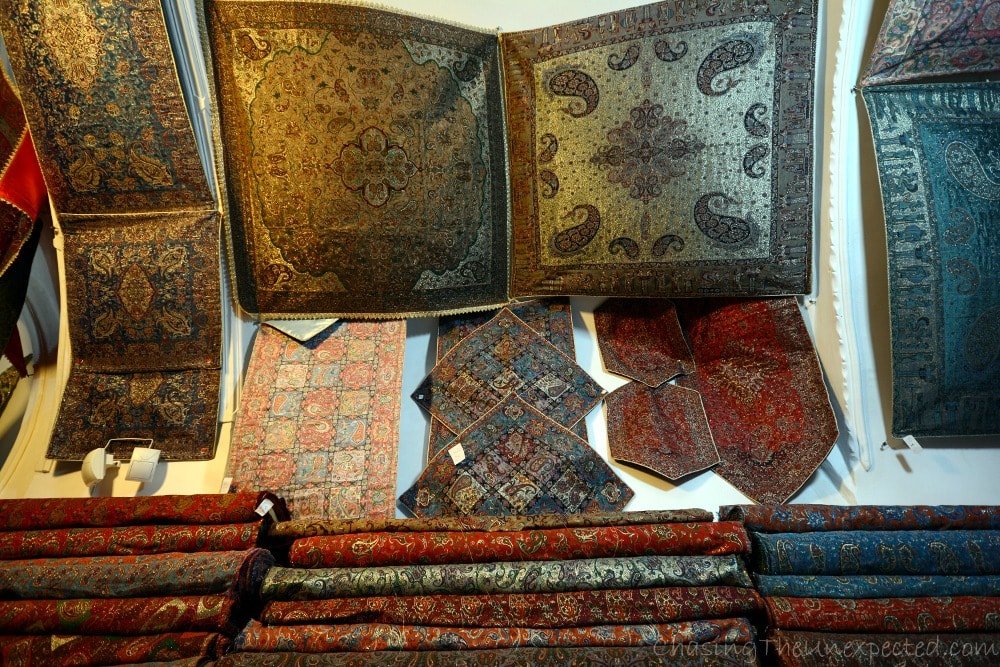
Termeh
One of the most important souvenirs of Yazd is a kind of fabric known as Termeh. It has been being weaved in Yazd from 400 years ago. Termeh has being used by Zoroastrians in celebrations for weaving a kind of trousers. Materials for weaving Termeh are silk and wool. It is used for weaving different things like shoes, bag, classic clothes and etc.
In the past, this traditional fabric used to be weaved with hands, but todays it is being weaved by machines.
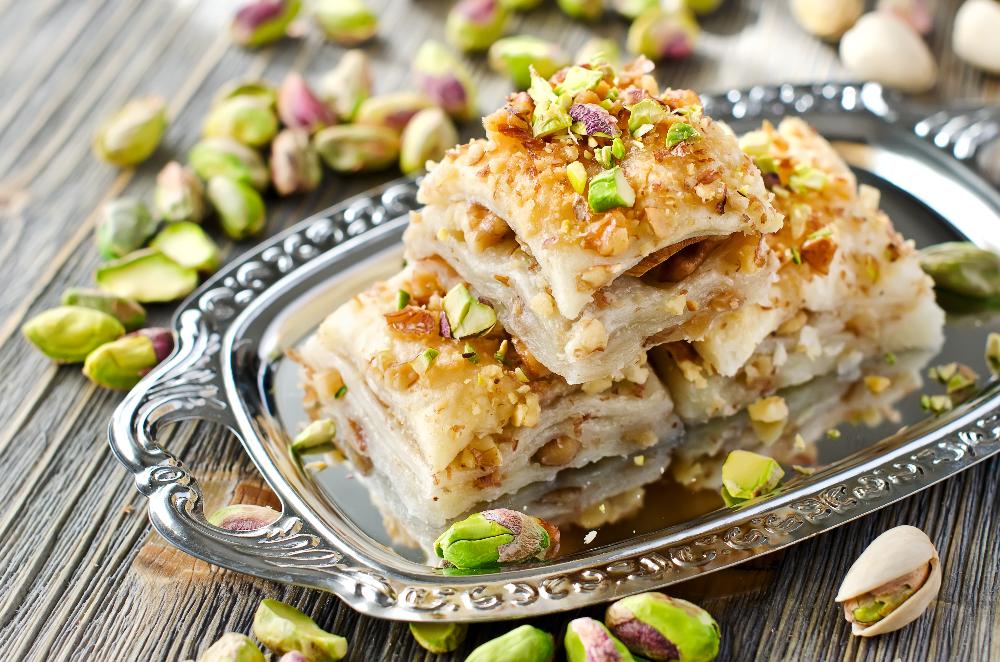
Baqlava
Baqlava is a rich, sweet pastry made of layers of filo filled with chopped nuts, sweetened and held together with syrup or honey. It is characteristic of the cuisines of the former Ottoman Empire, and is also found in Central and West Asia.
Baqlava is normally prepared in large pans. Many layers of filo dough, separated with melted butter and vegetable oil, are laid in the pan. A layer of chopped nuts-typically walnuts, pistachios and hazelnuts.
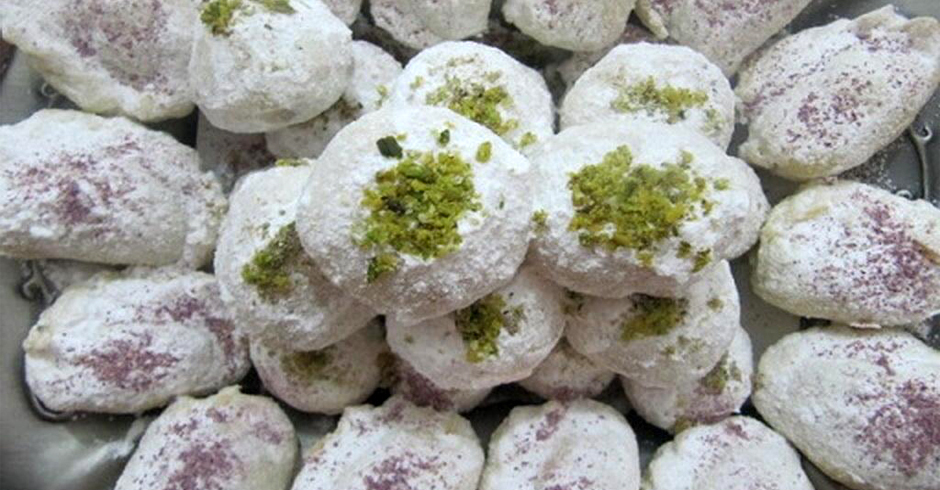
Qhotab
Qotab is an almond-filled, deep-fried Persian pastry. It’s prepared with flour, almonds, icing sugar, vegetable oil and cardamom. Some versions of ghotab may contain other ingredients, since most of the best recipes are family secrets that are jealously guarded.
Ghotab is one of three types of sweets that the Iranian city of Yazd is famous for producing. The confectioners of Yazd keep their recipes very secret and many have been passed down through several generations.
Ingredients
- egg yolks, beaten
- plain yoghurt
- vegetable or canola oil
- baking powder
- flour
- ground almonds or walnuts
- sugar
- ground cardamom
- rosewater
- icing sugar, for dusting
- canola oil for deep frying
Instructions
- Beat egg yolks until creamy; add in yoghurt, oil and baking powder and mix well. Gradually mix in flour and knead well until dough stops being sticky. Cover and refrigerate 2 to 3 hours.
- Mix ground almonds or walnuts with the sugar and toast mixture in a skillet over medium heat for 10 minutes. Mix in cardamom and rosewater; mix well; set aside to cool.
- Roll the dough out on a floured surface to 3 mm thickness. Cut into 6 – 7½ cm circles with a cup or a round biscuit cutter. Fill each circle with ½ teaspoon of the sugar-nut mixture in the center of each circle. Bring the edges of the circle together and crimp to seal completely into small crescent shapes.
- Preheat oven to 180°C.
- Carefully transfer the stuffed pastries onto a parchment-paper-lined baking sheet. Bake until golden brown, about 15 to 20 minutes. When cool, roll in icing sugar to coat.
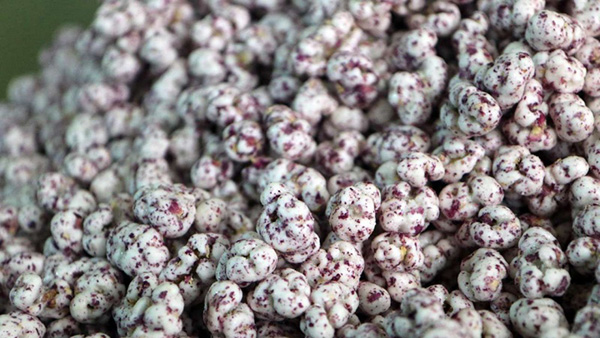
Noghl
Noghl is a chocolate sugar in Iran. It has sweet taste and is generally made with sugar and some aromatic substances.
Generally Noghl made with almonds or pistachio nuts. Almonds or pistachios covers with noghl.
Noghls are generally used in wedding ceremonies in Iran and serve with tea is the best choice.
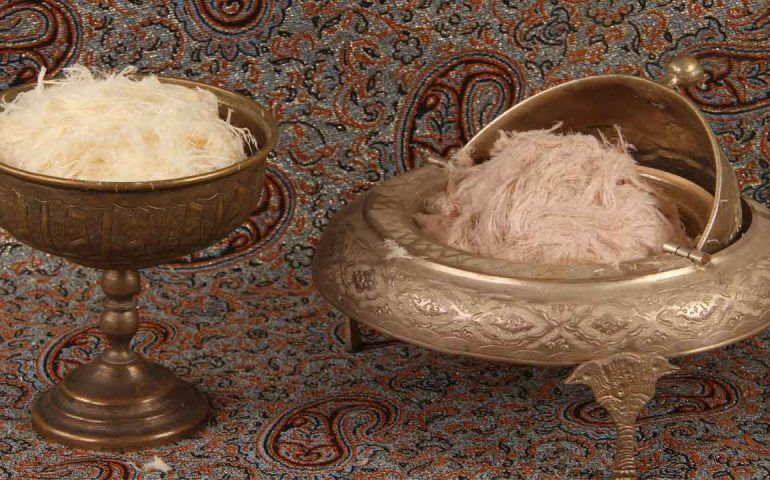
Pashmak
Cotton candy is one of the most delicious sweets in the city of Yazd in Iran, which is cooking. Cotton Candy has a wonderful flavor and is suitable for all ages. Flexible cotton candy mode and you can shape it.
Cotton candy is generally used alone and has a relatively large sugar that should be taking it carefully.
Yazdi Cakes
Ingredients
egg
sugar
1/2 cup unsalted butter, melted
1 c whole milk plain yogurt
1 tsp baking powder
1 tsp baking soda
1/4 tsp salt
1 tsp ground cardamom
1 Tbs rose water (optional) [I used it]
1/4 c rice flour
2 c sifted all-purpose flour
2 tbs ground pistachios
Directions:
Preheat oven to 350.
Blend egg yolks and sugar in a mixing bowl for 5 minutes until creamy.
Add melted butter, yogurt, baking powder, baking soda, salt, cardamom, rose water, and gradually add both types of flour; beat the egg whites until they form soft peaks and fold one third into the flour mixture using a rubber spatula before folding in the rest.
Pour the batter into individual cupcake molds, greased or lined with papers.
Sprinkle each cupcake with ground pistachios.
Place the cupcake pan in the center of the oven and bake for 20-35 minutes, or until golden [and a skewer comes out clean; mine took 20 mins]
Remove the cupcakes from the oven and allow to cool a little. Remove the cupcakes from the pan, and cool them on a wire rack.
What is a louz ?
Louz is a kind of sweet local to Yazd in the shape of a diamond. Diamond in Persian means Louzi and as the louz is in the shape of louzi (diamond), it is called louz. Louz is made of flour, sugar, and nuts. Louz is presented in different flavors such as almond, pistachio, coconut, saffron, etc. The most famous and the most popular louz is called Baklava.
You can read more about the traditional sweets of Yazd and their brief receipt, here.

Pottery and Ceramics in Meybod
The history of pottery in Meybod dates back to more than 700 years ago. Meybod is the largest producer of pottery products in Yazd province and potteries from Meybod are world-famous and highly valuable because of their specific design. These potteries are decorated with the pictures and designs of bird and fish, Khorshid Khanom (Lady Sun), and other desert designs. The dishes and potteries come in three types: simple pottery without glazes, glazed pottery, and ceramic tiles.
In 1971, Khorshid Khanom (Lady Sun) design was awarded a gold medal in an international fair in Munich.
Moreover, Yazd is famous for its tile and ceramic industry and exports millions of tons of tile and ceramic to other countries.
Carpet Weaving
Weaving carpets is the main handicraft in Yazd province with about 65,000 carpet looms and about 130,000 people engaged in this industry.
5% of handmade carpet produced Yazd province is used inside the province, 45% in other parts of Iran and the rest 50% is exported to other countries.
75 percent of the carpets woven in Yazd is made of wool and 25 percent is made of the fluff. The original designs used are Herati, Sardar-e Jangal, Flower and Fish, Kermani and similar motifs.
Termeh Weaving
Termeh is a precious fabric original to Yazd that is exported to other countries around the world and it dates back to 400 years ago. It is made of silk as warps and raw material such as thin fluff, yarn, wool as weft. It comes in various designs and shapes such as paisley pattern, Shah Abbasi, deer horn, etc. However, the most famous and the most popular design is paisley pattern.
The Zoroastrians used Termeh to sew a special kind of pants that they wear for their celebrations.
There are many kinds of Termeh like Yazdi Shawl, Shawl bandi, Rezaei Shawl, Striped Shawl, Scarf, Muharramat shawl, Atabaki Shawl, Cashmere Shawl which they have many fans.
In the past, termeh was woven manually, so it was also known as a finger-woven fabric but later its texture was made semi-manual using special looms and machines that made the weaving procedure more comfortable.
Zilu Weaving in Meybod
Zilu, the famous floor covering from Yazd, is made of cotton threads with natural and persistent color (blue and white, and sometimes red, orange and green from plants such as Rubia tinctorum, walnut shells, etc.). Zilu weaving is an ancient kind of carpet that dates back to pre-Islam era and Zilu is very durable and cool for desert areas. Zilu is mainly produced in Meybod in different designs of Rokneduni, Zolfak, small and large Hasht Par (polygon), Kelid (key), and Neftal as its most well-known one.
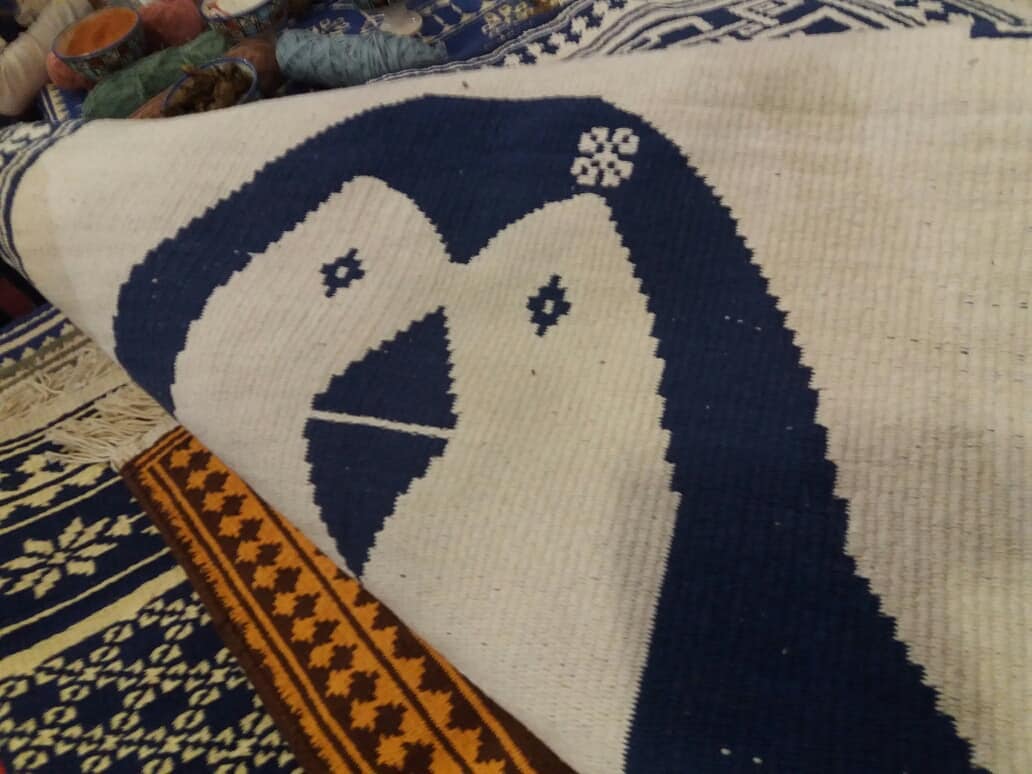
Brocade (Zari Weaving)
Brocade or Zari Weaving is the art of making fabric out of gold or silver threads with silk as its main material. Brocade dates back to Sassanid era. It is mainly woven in Isfahan, Abyaneh, Yazd and Kashan.

Shamad Bafi (Weaving)
Shamad is a thin cloth of cotton threads as warps and artificial silk as wefts with the plain striped designs. It is normally used as bed sheet or it is a very suitable coverlet in hot summers of Yazd.
Sha’r Bafi(Weaving)
Shar is a kind of light decorated cloth that used to be a home-based industry and the art of weaving this kind of cloth is called shar bafi. The art of Sha’r Bafi that is local to Yazd has various branches in which the cloth ( shar ) is designed and woven using wooden looms in various dimensions. This art has flourished well in the past with women and men have been engaged in houses and workshops, but nowadays few active workshops can be found where visitors can learn about this industry more.
Ikat ( Darayi Weaving )
Darayi (IKAT) is produced in many workshops in Yazd out of natural silk as the primary material and viscose yarn. Ikat which is a precious and normally expensive fabric is presented in warm and light colors such as yellow, green, red and purple. This weaving industry that is local to Yazd dates back to 800 years ago. Ikat is mainly used for decorative purposes.
The term darayi (literally means property) is due to the fact that in the old days it was a part of valuable things of a bride’s dowry and only the rich people were able to buy it.
Blanket Weaving
Handcrafted blanket weaving is carried out by the women in Ashkezar and Kharanaq. This type of blanket is initially 22 × 0.5 m in size which is then divided into four pieces and sewn together to make blankets with the size of 2 × 2.2 meters.
Giveh Weaving
Giveh is a kind of handwoven-top shoe that is soft, comfortable, and durable to wear. It used to be common in several parts of Iran; however, it is produced in Yazd and Kermanshah.
In Taft, Mehriz, Nir, Hanza, Baghdad Abad and Bahabad of Yazd Province, rural women use woolen yarn and some simple tools to weave the upper part of the shoe; while, the board (bottom) is made by men, this process is called Takht keshi.
Chador Shab Weaving
Chador Shab is a kind of cloth woven using cotton, wool, and silk strings used as outer garment for women to avoid humidity in northern part of the country and as a bedcover or handbag in other parts such as Yazd.
Chador Shab Weaving or karbafi is a homemade industry of viscose yarn, cotton yarn, colored materials and starch, which is woven in Yazd, Ardakan, and Zarch.
The Chadorshabs are usually of two types; thin with designed pictures for packing beds and thick one with striped designs for carrying forage and agricultural products.
Napkin
Yazdi local napkins are plainly or colorfully woven and produced by traditional hand-held and electric looms in workshops in Yazd.
These napkins are woven in different types such as silk, nomadic, and mercerized.
Bed sheets
Sheets for covering the beds are made from the raw material of viscose yarn and wool, which is produced in the dimensions of 240 × 300 cm.
Boqche and Long (a kind of colorful, loose fabric usually used in cleaning)
The bathroom long and boqche are colorful and nice fabrics of 110×150 cm, often are woven by cotton yarn.
Carpet Protector
Carpet Protectors woven in Yazd are normally striped cotton fabric with a width of 96 cm usually in black and white or blue and white. It is used to cover the main carpet of the room and to protect it from the dirt. The carpet protectors are produced in different sizes depending on the size of the carpet.
Straw weaving
Weaving some natural carpet out of straw and palm fiber is common in areas such as Bahabad, Bafq, and some villages in Ardakan. The products of straw weaving include floor mat, straw fan, different kinds of hat, broom, and baskets.
Zargari (gold smith)
Zargari is one of the finest, delicate and valuable arts in Yazd. The gold smiths using simple and geometric designs and also symbolic designs, create precious and 20-carat ornaments with a combination of precious stones and jewels. Jewelries such as ring, earrings, bracelets, necklaces, pendants and bangles are made and sold in Yazd.
Interestingly, there is a traditional bazaar called Zargari (gold smiths) where most of the store sell and/or make jewelries.
Coppery in Yazd
Among the various handicrafts in Yazd, the copper goods and dishes are so attractive and draw the attention of the visitors due to its good quality, variety, and different designs.
Coppery is an old famous industry in Yazd. Yazd is known as the most important center for copper handicrafts. In the past, the copper products mainly included cooking tools such as spoon, basin, plates, pots, and etc.; however, with the change in the lifestyle of people, the copper products also have changed and a wide range of them with decorative objects can be found in Yazd and are mostly used for decorative purposes.
